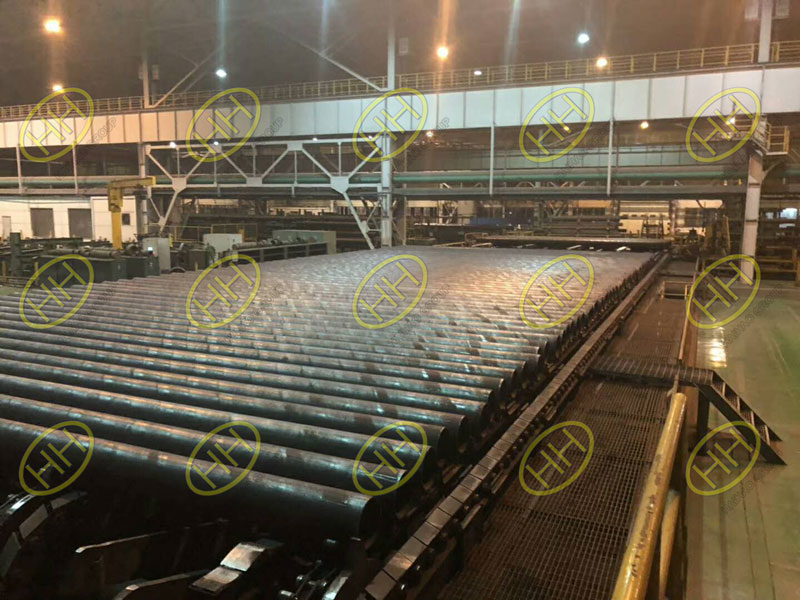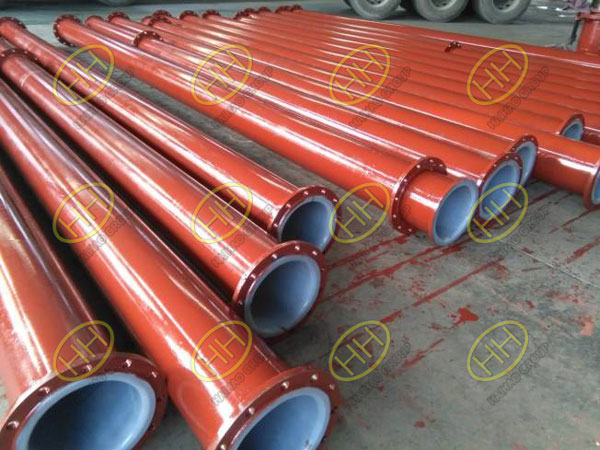Overview of steel pipe quality inspection methods
As a professional manufacturer that supplies steel pipes for a long time and strictly controls the quality, today we will briefly introduce the quality inspection methods of steel pipes.
1.Chemical composition analysis:
Chemical analysis, instrumental analysis (infrared C-S instrument, direct reading spectrometer, zcP, etc.).
①Infrared C-S instrument: analysis of C and S elements in ferroalloys, steelmaking raw materials, and steel.
②Direct reading spectrometer: C, Si, Mn, P, S, Cr, Mo, Ni, Cn, A1, W, V, Ti, B, Nb, As, Sn, Sb, Pb, Bi in block samples
③N-0: Gas content analysis N, O

API 5L PSL2 X65 seamless steel pipes
2.Inspection of steel tube geometry and shape:
① Inspection of steel pipe wall thickness: micrometer, ultrasonic thickness gauge, not less than 8 points at both ends and record.
② Inspection of outer diameter and ovality of steel pipe: caliper, vernier caliper, ring gauge, and measure the maximum and minimum points.
③ Steel pipe length inspection: steel tape measure, manual and automatic length measurement.
④ Steel tube bending inspection: Measure straightness, horizontal ruler (1m), feeler gauge, and thin line to measure the bending degree per meter and the total length.
⑤ Inspection of bevel angle and blunt side of steel pipe end face: square, card.
3.Surface quality inspection of steel pipe: 100%
① Artificial visual inspection: lighting conditions, standards, experience, markings, rotation of steel pipes.
②Non-destructive inspection:
Ultrasonic flaw detection UT:
It is more sensitive to the surface and internal crack defects of various materials.
Standard: GB / T 5777-1996 Level: C5 level
Eddy current flaw detection ET: (Electromagnetic induction)
Mainly sensitive to point (hole) defects. Standard: GB / T 7735-2004
Level: B
Magnetic particle MT and magnetic leakage detection:
Magnetic flaw detection is suitable for the detection of surface and near-surface defects in ferromagnetic materials.
Standard: GB / T 12606-1999 Level: C4 level
Electromagnetic ultrasonic flaw detection:
No coupling medium is required, and it can be used for high-temperature, high-speed, rough surface inspection of steel pipes.
Penetrant flaw detection:
Fluorescence, coloring, detection of surface defects on steel pipes.

Plastic lined flanged steel pipe
4.Steel management performance inspection:
① Tensile test: measure the stress and deformation, determine the strength (YS, TS) and plasticity index (A, Z) of the material
Longitudinal and transverse specimens Tube, arc, and round specimens (¢ 10, ¢ 12.5)
Small-caliber, thin-wall, large-caliber, thick-wall calibration distance.
Note: The elongation of the sample after breaking is related to the sample size GB / T 1760
② Impact test: CVN, notch C-type, V-type, work value J / cm2
Standard sample 10 × 10 × 55 (mm) Non-standard sample 5 × 10 × 55 (mm)
③ Hardness test: Brinell hardness HB, Rockwell hardness HRC, Vickers hardness HV, etc.
④Hydraulic test: test pressure, holding time, p = 2Sδ / D
5.Inspection of technological performance of steel pipes:
①Flattening test: round specimen C-shaped specimen (S / D> 0.15) H = (1 + 2) S / (∝ + S / D)
L = 40 ~ 100mm Deformation coefficient per unit length = 0.07 ~ 0.08
② Ring pull test: L = 15mm, no crack is qualified
③Expansion and curling test: taper of top center is 30 °, 40 °, 60 °
④ Bending test: Can be used instead of flattening test (for large diameter pipes)
6.Metallographic analysis of steel pipes:
① High power inspection (micro analysis): Non-metallic inclusions 100x GB / T 10561 Grain size: grade, grade difference
Organization: M, B, S, T, P, F, A-S
Decarburization layer: inside and outside
Method A rating: A-sulfide B-oxide C-silicate D-spherical oxidation DS
② Low magnification test (macro analysis): naked eye, magnifying glass below 10x
Acid etching inspection method,
Sulfur inspection method (tube blank inspection, showing low culture structure and defects, such as looseness, segregation, subcutaneous bubbles, peeling, white spots, inclusions, etc.
Tower hairline inspection method: inspect the number, length and distribution of hairlines.
